Whether you’ve been to Europe before or not, sometimes you might find yourself with plenty of time but not plenty of money. If you’ve got at least two weeks and hopefully closer to four weeks, you can still have an amazing experience in some of Europe’s greatest cities on a small budget. If you’ve visited London, Paris, or Rome before, you’ll be happy to know that you can visit many other cities while spending half or even less per day.
The itinerary suggestions below are perfect for two quick weeks. If you have more time this is still a great itinerary to use as a starting place, and you’ll find other places you’ll want to add along the way if you have more time. We use our Europe Backpacker Index to show the price comparisons of the cities suggested. Each of those prices is a typical day’s expenses for someone on a ‘backpacker’ budget. If you prefer 3-star hotels you’ll spend at least a bit more per day, but if you are sharing a cheaper hotel room it can still be shockingly inexpensive. By the way, for your first trip to Europe you probably want to choose England, France, or Italy, and save the cheap ones for your next trip.
Note: This article was last updated in August, 2022.
Best four cheap European cities to visit together
- Berlin, Germany
- Prague, Czech Republic
- Budapest, Hungary
- Krakow, Poland
Each of the cities listed above is strong enough to be the highlight of almost any trip, and fortunately they are relatively close together so they work really well as a group. On the map they sort of form a box, so skipping one is easy, and there are plenty of side stops and trips possible in between for shorter or longer stays.
A version of this itinerary can also be found on my new best Europe itineraries for first-time visitors article.
Best cheap and gorgeous small town to add to your trip
- Český Krumlov, Czech Republic
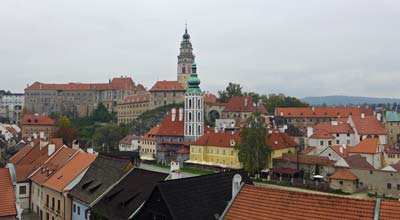
Getting there and back
While none of these cities is among the cheapest in Europe to fly into, at least 3 of them have cheap enough flights that it’s worth flying directly into one of them.
Of the four cities, Berlin will have the cheapest inbound flights from almost anywhere, and Krakow usually only has cheap flights from within Europe. Check flights from your city into each of these cities to see which one will be your cheapest option.
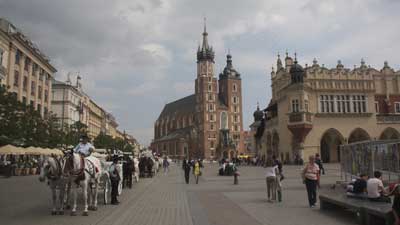
Getting between the cities
There’s little doubt that the most enjoyable way to get between these cities (and most European cities) is by train, but you do have two other main options to consider, namely, flights and buses.
Trains
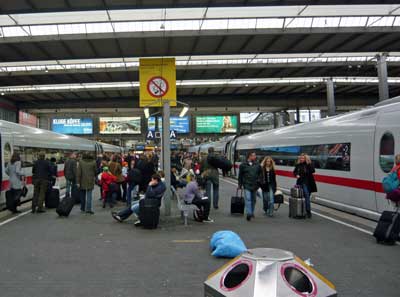
Flights
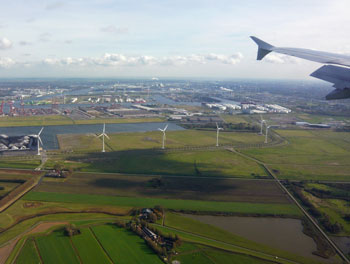
Buses
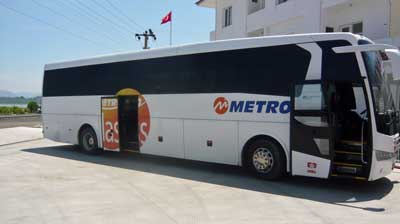
4 Best cheap European cities that are easy to travel between
Below you’ll find the four best cities to use as the foundation of a cheap and wonderful trip to Europe. It’s recommended to spend at least 3 nights in each city, even if you think you are in a hurry.
Berlin, Germany
2022 Backpacker Index: US$64.56/day
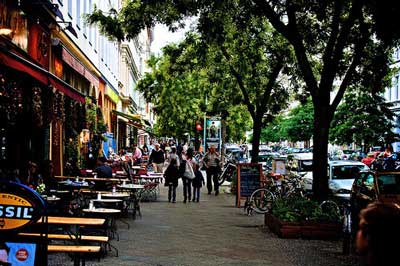
One challenge is that Berlin is a huge and spread-out city, so it’s important to choose where you stay wisely. Most budget travelers will prefer the former East Berlin section around Mitte and Prenzlauer Berg, which is where most hostels are as well as the best and cheapest nightlife and shopping. Check our list of recommended cheap Berlin hotels for a place to start.
What to see and do in Berlin
Start with the Berlin Free Walking Tour on your first morning, and you’ll have enough ideas for what to do for the rest of your stay from that alone. Being honest, the Reichstag (capital building) is a bit disappointing from the inside, although the city does have a handful of great museums clustered together that appeal to many. The Berliner Dom (cathedral) is well worth a visit and you’ll get some great photos from out front.
But mainly Berlin is about exploring the weird and funky neighborhoods for food, shopping, and nightlife. Fortunately, most of it is quite cheap as well. Probably the most famous food to try is currywurst, which is usually a paper tray containing a sliced up hot dog coated in a curry-flavored ketchup. I’m not really a fan, but you should try it, especially after a few beers.
Prague, Czechia
2022 Backpacker Index: US$53.95/day
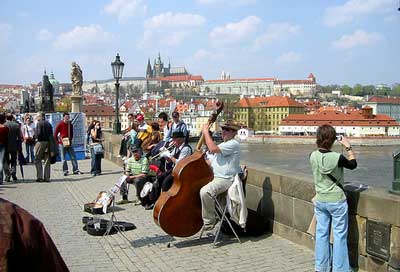
Prague is also fairly compact, with most things walking distance from each other. The city is also quite cheap still, at least compared to Western Europe, although hotel prices can seem high if you want to stay in the middle. Check our list of recommended cheap Prague hotels for some really good ones only a quick and cheap tram ride away.
What to see and do in Prague
Aside from the famous clock in the town square, Prague has a few other very worthwhile checklist attractions. The Prague Castle is one of the largest and most incredible in Europe, and the Charles Bridge and its statues feels like you should have to pay to cross it. As with most European cities, it’s wise to start with a “free” (tips-based) walking tour on your first morning in town. The Prague ones are excellent and in a couple hours you will have seen most of the famous landmarks while hearing the interesting stories behind them. Even a US$10 equivalent tip per person is a great bargain, but tip whatever you feel good about.
There is plenty more to fill a few days, plus you can catch a cheap classical concert in one of the many venues offering them, or just indulge in cheap and excellent beer like everyone else.
Budapest, Hungary
2022 Backpacker Index: US$30.45/day
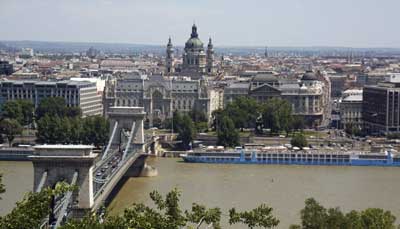
Budapest is also compact enough that budget travelers can stay in the cheap hotels and hostels a bit inland on the Pest side, and still walk everywhere while sightseeing. The Free Budapest Walking Tour covers highlights on both sides, and is a great introduction.
What to see and do in Budapest
During daylight hours, Budapest has the standard selection of monuments and museums in addition to its castle complex, but separates itself from other big cities with its abundant hot springs and spas. Tourists can easily mix with locals and take a dip at a modest fee in one of the unique facilities spread around town.
At night, however, Budapest really comes into its own, with some of the most interesting nightlife in Europe. Head for what are known as “ruin pubs” on the Pest side in the old Jewish Quarter to quaff cheap drinks in converted courtyards that each has its own weird vibe.
Krakow, Poland
2022 Backpacker Index: US$30.72/day
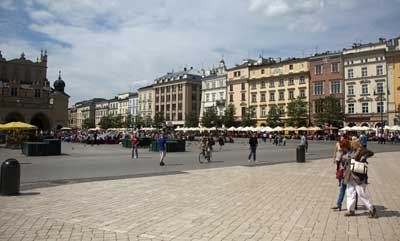
For those who like hearty portions of meats and sausages, Krakow is wonderful, but there are also many Italian and other international cuisines, including many vegetarian options, so something for everyone. Hotels just on or near the central square are reasonable, but you can stay for a lot less by going a few blocks away.
What to see and do in Krakow
As in many other cities, taking the Krakow Free Walking Tour is a great way to get oriented on your first day so you’ll know what you want to explore more deeply. You can also cover many of the main central sights on that tour, which leaves time for day trips and hanging out. Sad though it may be, a half-day trip to nearby Auschwitz is something you’ll never forget, and there is a fun salt mine attraction not far away as well.
In the evening you’ll probably find out why Krakow is very popular with the weekend party and stag-do crowds. You can sip affordable wine at one of the cafes on the square, but it might be more fun to do a pub crawl through the varied drinking establishments in the nearby Jewish Quarter. It’s easy to find a .5L beer for around US$1.50, so getting carried away is common.
Český Krumlov, Czech Republic
2022 Backpacker Index: US$40.47/day
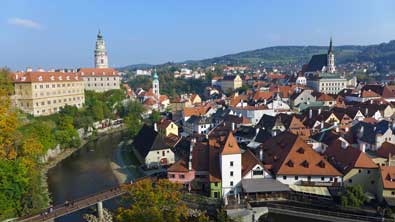
There are almost no chain hotels or restaurants of any kind, so staying here will be a very local experience. Better still, hotels and food here are much cheaper than even in Prague, so the value is outstanding. The historic town center is small enough to walk through in less than 10 minutes, yet you can still get nice hotels in its heart starting at around US$50 per night. As of 2022 the hostels in Český Krumlov are closed so we had to use hotels for the Backpackers Index, which makes the index price artificially higher than it should be. In other words, if you visit this town you’ll find it to be pleasantly affordable.
What to see and do in Český Krumlov
Český Krumlov does have an impressive castle perched above the compact town center, and you’ll definitely want to tour at least part of it. But really the main reason to visit the town is to slow down and appreciate being outside of Europe’s large cities for 2 or 3 days. Those other four cities are always busy and crowded, while this one is gentle and lovely, although you will be surrounded by quite a few other tourists.
As with the other cities on the list, there is a highly recommended free walking tour in Český Krumlov, which is a great place to start. That tour will also show you and explain all of the other worthwhile nearby sights, but I won’t blame you if you just prefer to grab a seat at one of the cheap restaurants with outdoor seating on the main square, and relax over a few delicious and inexpensive beers for a while.
Additional photo credits: Berlin by Philippe AMIOT on Flickr, Prague by POldi♬24 on Flickr

Hi Roger, your articles are really helpful. i wanted some help with planning a 10 day trip to south Europe in the month of Jan. I have read some articles and it says south Europe is doable in Jan as it won’t be freezing cold.
Abik,
It’s true that southern Europe isn’t freezing in January, but it’s still quite chilly. It’s just important to sort out your destinations in advance. You can go to any proper city, such as Athens, Rome, Madrid, or Lisbon, and the weather will be decent enough to do some sightseeing and enjoy yourself. And the cities are packed with locals all year round, of course. BUT, if you went to places that are more known as beach resorts, such as Santorini, the Amalfi Coast, or the Costa Del Sol in Spain, they will be pretty dead and not worth visiting. In other words, the beach resorts are very seasonable and mostly closed in January, but the large cities are open and usually enjoyable in winter. Let me know if you have any other questions. -Roger
Hi Roger, have been reading your advice for 4 wks in Europe. Would love your assistance with my route too. We want to go from Australia to Greece mainly in 2017. have 4 wks to travel. So, therse are our preferences. Rome, Athens, Rhodes, Kalymnos (for 10days), Cyrus and maybe Mykonos and Santorini. Is this a smooth route? what would you suggest? any advise would be great. cheers Maria
Maria,
From Rome to Athens you’ll want to fly, as taking ferries would take at least a day and cost way more. Once in Athens I think your plan looks quite good. I don’t have the ferry schedules memorized, and really you’ll just need to look those up yourself as you put together a route. For one thing, the ferries are very seasonal, and many of them don’t operate at all from November through early April. The smaller Greek islands tend to be quite dead during those months as well, which is why there are no ferries.
The Greek ferry system is very efficient, but also complicated. Some ferries only go a few days a week, and many of them stop at several islands on the way from one major port to another. You’ll just have to go to one of the ferry-booking sites and see if your plan can be done on the days you’d want to do it.
One last thing I’ll add is that the vast majority of visitors to Greek islands go there mainly just to relax during the day and maybe have a few drinks at night. Each of them obviously has its own bit of scenery, but the towns in most of them are quite similar. In other words, very few people go from one to another to another like you are planning. It sounds like you are very interested in these islands, and as such you’ll certainly enjoy yourself. But you might also consider mixing in one or two other types of destinations, such as some of the historic towns on mainland Greece, or even one or more of the Turkish resort towns that is close to the Greek islands. Marmaris is a short ferry ride from Rhodes, and Bodrum is close to Kalymnos. It’s just something to think about, and Turkey is a bit cheaper than Greece. Let me know if you have any other questions I might help with. -Roger
Hi Roger
After going through your posts and searching on web,here is my list:-
1.Paris 3 nights
2.Brussels and Brugges 3 nights
3.Amsterdam 3 nights
4.Berlin/Munich whatever you suggests 3 nights
5.Prague 3 nights
6.Vienna 3 nights
7.Poland 3 nights
8.Switzerland 3 nights
Now,it’s 7-8 places in 25 days.Hope this works well and is doable itinerary.
Kindly advice.
Thanks 🙂
Harsh
Hi Roger
Kudos to your informative blog.Respect from India.
Me and my wife are planning to visit Europe next year.We want to visit France,Belgium,Germany,Prague,Poland,Switzerland,Amsterdam and a bit of Spain.My queries are as below:-
1.How many days do we need to cover above places?Don’t want to spend more than 3 days in each.
2.What will be the best place to fly in and out from India?
3.How much budget do we need for a couple?
4.We do not want to spend all days in just one place like all 3 days in paris.Would like to cover surrounding cities also like monaco,nice etc.
5.What will be the best time to travel?
6.How to commute between all these countries?
I am sorry i think i have asked a lot of information.I need a budget plan and not a hi-fi expensive plan.
Thanks in advance
Harsh
Harsh,
Thank you, and I’ll be happy to try to help.
1. In almost all cases, I recommend spending 3 nights in each city. Any day that you go from one city to another, you’ll be using most of that day in transit rather than sightseeing. So if you change cities every three days, it means 2 sightseeing days for every 1 transit day. If you move every other day, it’s 1 sightseeing day for every 1 transit day. In other words, you spend half your time on trains and in airports, and only half the time seeing the things you’ve come all that way to see.
On your list you’ve got a couple cities and several countries. For France, just do Paris for 3 or 4 days (it’s a large city packed with sights). In Belgium I recommend an afternoon in Brussels and then 2 nights in Bruges as a minimum visit. Germany is large and the main cities are spread out, so it’s not obvious where to go. I’d do 3 nights in Berlin at a minimum, and if you want to see another city I’d do 3 nights in Munich. Three nights in Prague is good. In Poland, do 3 nights in Krakow and ignore the rest for now.
For Switzerland you’ll want to do at least 2 nights in the Interlaken area and perhaps 1 night in Lucerne. Three days in Amsterdam is perfect.
2. You usually get the best long-distance fares into the largest airports. In this case it would mean Paris or Amsterdam, although Amsterdam has taxes that often make it expensive. You might also consider flying into one city and then home out of another. I’ve found that one-way airfares from Asia to Europe are often half the price of a round-trip, so that would save you from having to go back to your starting city.
3. You can calculate a basic daily budget on our 3-star Europe travel index. The average for the cities on your list is about US$100 per day, per person. That includes most daily expenses, but not transportation between cities. Switzerland is by far the most expensive, but it’s also incredibly nice and can be appreciated in only a few days.
4. As I mentioned above, you really don’t want to move too quickly or you’ll end up spending most of your time on trains. Imagine someone who had 4 days to visit India. Would you recommend 1 day in Mumbai, 1 day in Delhi, 1 day doing Agra as a day trip, and then 1 day in Goa? Most of the cities on your list are about 5 hours apart by train, and even flying takes the same amount of time when you factor airport transportation into it.
5. The best times to visit Europe are April, May, September, and October. The weather is nice, but not too hot, and the crowds are smaller and hotel rates lower than in the summer months.
6. Train is the best option in most cases. If the train takes more than about 7 hours, flying is faster and probably cheaper as well.
Let me know if you have any other questions. -Roger
Hi Roger
Thank you so much for your prompt reply.
It helped me to get an idea to understand the possibility of travelling to Europe.
Now,can you help me in planning the itinerary for the above-said plan??
Like from which city to start,what to places to visit,then moving to next city and so on and then ending the tour.
Can I add Vienna in between??
Can we use Euro pass for travelling through the countries?
Thanks 🙂
Harsh,
I’m happy to have helped, and I’m happy to help more as you get this trip together. First off though, you really need to decide which cities you really want to visit, and how much time you will have for the Europe stay. Without knowing your tastes and personality, I wouldn’t want to just type out an itinerary based on my own tastes. Needless to say, it’s more efficient if you choose cities that are reasonably close to one another. There are high-speed trains in France, Germany, Netherlands, Spain, and between the main cities in Italy. So in those cases, you can cover a lot of ground quickly.
As for a Eurail Pass, those are well suited to people on longer trips where they want to make plans as they go. The passes are fairly expensive on a per-day basis, but almost always cheaper than last-minute train fares between big cities. For someone who has a set itinerary for the whole trip before they arrive, it’s almost always cheapest to buy your train tickets online in advance. They can be surprisingly cheap if you buy them at least a month or two in advance. Let me know which cities are calling you, and I’ll help you sort out the order and such. -Roger
Hi Roger
Thanks again 🙂 for helping.
Me and my wife both are not much into meuseums but would like to visit Louvre and important ones in other cities.We would be more than happy to travel places which are full of natural beauty,green country side etc.But that doeant mean we are not interested in cities architecture.We also love to know local culture of the place like visiting a local village where we can understand the local people.Like in my first post,I have mentioned that we dont want to visit only main cities of a country,but would like to visit surronding village or smaller cities as well.
As far as cities are concerned,we would like to visit Paris,one more city/village for wineyards in France,Brussels,Bruges,Amsterdam and its surrounding cities,Berlin,Munich,Black forest,Cologne,Main attraction of Poland,Prague,Vienna and if possible Rome also.
To give an idea,I have heard Burges is more interesting then Brussles.So like wise we want to visit surrounding cities also.
We would be having around 25 days to cover these places.And if you are also in one of these cities or around these cities,would love to meet you 🙂
Ooppss..I forgot Switzerland above.
Thanks in Advance
Harsh
Harsh,
You are getting closer to narrowing down your list to fit the 25 days, but you aren’t quite there yet. From my count, you have about 14 destinations on your list, and I’d recommend no more than 9 or possibly 10 in 25 days. I’ll start with the ones that in my opinion you shouldn’t miss.
Paris 3 nights
Amsterdam 3 nights
Berlin 3 nights
Munich 3 nights
Prague 3 nights
Vienna 2 or 3 nights
Cologne is sort of a 2nd tier destination in Germany. Brussels and Bruges are both interesting, but if you spend 3 nights in Amsterdam you’ll get the best feel for that part of Europe in a short time. The Black Forest doesn’t really have anything interesting to see except for some small shops selling cuckoo clocks.
If you want to see the best of Poland then spend 3 nights in Krakow. It’s really interesting, and very cheap.
If you want to visit Italy I normally recommend a minimum of 6 nights, including 1 nights Venice, 2 nights in Florence, and 3 nights in Rome. If you just wanted to visit Rome you could do that in 3 nights, but it would mean flying in or passing through Venice and/or Florence on the train anyway. For most people, 1 night in Venice and 2 nights in Florence would be far more memorable than, say, 3 nights in Munich. Italy is popular with first-time visitors for a reason.
If you want to visit Switzerland then I recommend at least 2 nights in the Interlaken area, and also 1 or 2 nights in the Lucerne area. I discuss all of that in my article about where to go in Switzerland.
At the moment I’m based in London, but I will be traveling around Europe in the coming months. I usually move pretty quickly on these research trips, but let me know when you’ll be doing this holiday and it’s not impossible that I’ll be in the same area.
Once you sort out more of a final list, it will be pretty easy to see which order to visit the places in. And of course I’ll be happy to help if you need it. -Roger
Hi Roger, my wife and I will be in Europe Sept 7 thru Sept 24 2016. We are flying into Berlin and out of Munich. We are wanting to go to Berlin, possibly Copenhagen, Prague, Salzburg, and Munich. Do you think this is doable and what city would you book the flight to Copenhagen? Should we go after Berlin and then fly from Copenhagen into Prague? Or would you omit Copenhagen and pick up another city that is closer? I have always wanted to go to scandinavia. Thanks, Jeff
Jeff,
Copenhagen is really gorgeous and quite unlike the other cities on your list, so I think you should go. Your plan sounds really good, and my hunch is that flying from Berlin to Copenhagen and then from there to Munich would be the cheapest and most efficient option. Fortunately, Europe is awash with low-cost airlines, including ones that service Copenhagen, so as long as you book well in advance you’ll probably get surprisingly cheap flights. And because of all those cheap airlines, it’s even possible that you could get the best fare into or out of Prague as well.
My normal recommendation is to plan on 3 nights in each large city you visit, and with 17 days and 5 cities you have the perfect amount of time. Berlin and Prague have the most things to see on your list, so you might do 4 nights in each. Salzburg is the smallest, but still 3 nights there is ideal.
You could even take a train from Berlin to Copenhagen in 7 hours and 15 minutes. If you buy that ticket soon it will be fairly cheap, and taking the train is FAR more enjoyable than hustling out to the airport with all the security and such. If you were to fly it would take about 5 hours from city center to city center, so the train is a bit slower, but definitely more enjoyable. Depending on the cost of the flights, the train would probably be my choice. Unfortunately, the scenery on that ride is fairly flat and plain, but still nice enough. And when you are comparing prices of flights and trains, be sure to include the cost of city to airport transportation. Even if the flight seems a bit cheaper, it may not be when you add in the airport transportation.
Have a great trip and let me know if you have any other questions. -Roger
Hi Roger,
I’m planning on a month long trip to Eastern Europe around mid August to mid Sept, hoping to do some sight seeing, hiking and other outdoor activities. These are the countries I would hope to explore but you are more than welcome to suggest what’s best for my trip: (I’m flying in to Prague and will be on trains and buses to get around): Czech – Austria – Slovakia – Hungary – Slovenia – Croatia – Bosnia – Montenegro – Albania… then fly out either from Athens (depending on how safe to travel to Greece) or Rome (ferry from Albania or Montenegro if there is any)
Not sure if I could do this itinerary in a month and how easy it is but any recommendations or suggestions is greatly appreciated.
Hope to hear from you soon. Cheers! – Rodel
Rodel,
This is surely going to be a great trip. Rather than thinking in terms of countries, I find it much easier to think in terms of cities. In most cases you are going to want to spend about 3 days in the capital or largest city in each country, although there are a few exceptions.
In Czech Republic you obviously want to visit Prague and I highly recommend 2 days in Cesky Krumlov as well.
In Austria you’ll want to spend 3 days in Vienna, and also probably 2 or 3 days in Salzburg. Bratislava is the first place to go in Slovakia, and it’s less than an hour away from Vienna, but honestly I would skip it on this trip. It’s nice enough. It’s just not that interesting compared to the others on your list.
And of course you want to spend at least 3 nights in Budapest. Ljubljana is an interesting and pleasant town, but Slovenia is actually more known for its nature destinations, so it’s a tough choice. I’d skip Zagreb and focus your Croatia time on Split and the islands just off of it. And from there you can go to Sarajevo (lovely) and then Dubrovnik on your way into Montenegro and Albania.
My standard recommendation for trips like these is to plan on 3 nights in pretty much every place you go. In this part of Europe, the travel times between them are pretty long (5 to 7 hours in many cases), so that travel day every third day will allow for no real sightseeing. In other words, if you wanted to spend only 2 nights in each place, you’d literally spend every other day on trains or buses, and only be seeing the real sights every other day as well.
So think in terms of 9 to 11 cities in 30 days, and then string together the best ones on your list. I’m not sure you’ll have enough time to really see the cool things in all of the first 5 or 6 countries on your list, and then still have a week or more for Montenegro and Albania. That’s partly why I’ve yet to make it to those two countries myself. People say they are nice, and cheap, but no one raves about them compared to places like Split or Budapest or Prague. I’ll be happy to help you sort out your list.
In this part of Europe you’ll end up taking buses in almost all cases. Weirdly enough, the bus networks are much bigger and there are far more departures each day. And the buses take about the same amount of time as the trains, because the trains in this area are old and slow, and the buses are usually cheaper than trains as well. In other words, I’d start my planning by looking up the bus connections and fares, and in the areas where there are also trains (Czech Republic, Hungary, Austria), you can look those up too. In Austria the trains are better, but in the other places you’ll probably end up on buses, and be happier as well.
I’m not sure if there is a ferry from Albania or Montenegro to Italy. I’ve done a ferry from Italy to Split, and I don’t know if I’d do it again. The ferries go overnight, so you have to buy a bunk, and they are as expensive as flights. And they take a whole day because you have to get to the ferry ports on the east coast of Italy, which aren’t close to the tourist cities you want to visit.
Let me know if you have any other questions. -Roger
Hi Roger,
Thanks for the prompt response. My apologies for not getting back sooner. I am going with your suggested itinerary, travelling mid-Sept to mid-Oct, fly in to Prague and fly out of Athens. Spending 2 or 3 days per city and a day of travel in between cities. I will try to see as much highlights as I can but I also don’t need to see everything.
Do you happen to have web links to trains, buses and hostels for the cities that you have mentioned? So I could start planning my trip. If you do, please attach here or send them to my email. Thanks a lot for your help. Cheers! – Rodel
Rodel,
Your plan sounds really good. Most of the information I have on each city is on the page on the site for that city. Here is the Prague prices page, for example. On that page you’ll find info and a link to recommended hotels. I can’t help much more than that with individual recommendations, but let me know if you have any more questions. -Roger
Hi Roger,
I would appreciate some help with our itinerary. My husband is working in Bucharest (we are originally from USA) and we are thinking on making a trip by train leaving from Bucharest visiting Budapest and Prague. Can you help us with a suitable itinerary? He has two weeks vacations and we have thought about spending one week on this trip and the other week in Greece. Any suggestions for Greece as well? Also I f you have any suggestions on what to visit, see while in Bucharest, I mean during the weekends…thanks in advanced
Joha,
My own first visit to Romania will be in a few months, so I won’t be of much help for Bucharest. My own plans are to explore Bucharest for 2 days and then take a train to Bra?ov for maybe 3 days, as it’s usually sited as the most interesting place for foreign visitors.
The main reason that Romania is literally one of the last few corners of Europe that I’ve yet to explore is something you’ll soon find out, that it’s remote and travel is slow. Budapest is indeed the closest tourist city anywhere in that direction, and yet it takes a bit over 14 hours to reach on the fastest train. They are still mostly Soviet-era trains on older tracks, so they are just slow. The good news is that Budapest-based Wizzair is quite cheap, and also uses Bucharest as one of its bases. So you should be able to get cheap flights from Bucharest to Budapest, as well as many other worthwhile places.
The trains from Budapest to Prague are also fairly slow, but that’s only 6 hours and 42 minutes, so it’s probably better than flying because it’s zero stress, far more comfortable, and the views are pretty nice. I’d suggest three nights in each of those cities, or even 4 nights in Prague. They have many similarities actually, and you can practically use a map of one to get around the other.
Greece is a fine option, and again you’ll probably want to fly from Bucharest to Athens and spend 2 or 3 nights there. From Athens you can take a ferry to one of the closer islands for the remainder of the week, or get a cheap flight to one of the more remote islands. Santorini, Mykonos, Crete, and Rhodes are the most popular Greek islands, and most people fly into those because none is very close to Athens, and they all have plenty of cheap incoming flights in season.
It’s worth noting, however, that most people who go to Greek islands simply do so to relax during the day, and maybe have a few drinks over dinner at night. There are ruins and a few cultural attractions on some of the islands, but most people just go to relax. So if you are part of that crowd, you might be better off choosing one of the islands closer to Athens. I spent more than a week on the closest island, which is called Ageana, and it was lovely. The ferry takes about an hour from the Athens port of Piraeus, so it’s very convenient. There are some others that are only a bit farther as well.
Especially since you’ll probably be flying, you should consider Turkey as well. Istanbul is a pretty amazing city, and Turkey has more than its share of interesting sights. You could spend 3 days in Istanbul and then two days in Cappadocia, and two days in Antalya before a flight back home. You can get between them on affordable and comfortable buses, although they also all have airports.
Let me know if you have any questions about any of this. -Roger
Thanks so much for all your insight.. I didn’t realize the trip to Budapest by train was so long….we might follow your suggestions and fly there instead. We did Istanbul two years ago and it was great place indeed….even thought we were ripped off at a restaurant by the coast….but that’s another story to be told….LOL….one last thing…we will have a 12 hours overlay in Berlin…any suggestions on what to do in one day in Berlin? Thanks and blessings
Joha,
Berlin is one of my favorite cities in Europe, although it actually lacks any real must-see “checklist attractions.” As a result, it’s hard to pick just a couple things to recommend without knowing your tastes. You definitely want to take the metro to the Brandenburg Gate area, which is the most famous landmark. If you are in town at the right time I can also recommend the free walking tours (tips are encouraged) leaving from by the Brandenburg Gate, which take you to all the most interesting things in that area in a couple hours.
In my opinion, the former East is more interesting than the former West Berlin, as West Berlin is still mainly high-end shopping streets. Just have a look at the Berlin page on wikitravel.org, or on Lonelyplanet.com, and you’ll see several good things to choose from. -Roger
Thanks so much!
Dear Roger,
have been seeing all your posts . i wanted to know a few things.
me and my husband fly to amsterdam in late september . then to meet a friend in copenhagen and back. from amsterdam we are planning to hire a car and drive through the countrysides in netherland , germany , austria,chez republic , poland , hungary, croatia , slovakia and back to amsterdam.
do u think it is doable in car if e don’t go to main cities. and stay on the outskirts. we r planning to do absolutely non touristy spots.
our trip is for about 3 weeks.
how will the weather be during that time.
Vanessa,
The weather in northern and central Europe should be wonderful in late September. It’ll still be warm, and there are no areas in Europe where rainfall is problematic, especially that time of year.
You can definitely do this trip by hired car, although it seems like you’d be spending most days on the road in order to hit all of those spots in 3 weeks. And as you mentioned, hired cars and city centers are a bad combination in Europe because driving is confusing and parking is usually very expensive and sometimes hard to find. So as long as you plan on staying more on the edge of cities, or in smaller towns, you should be fine.
Hopefully you are aware of the relatively high fuel costs in Europe. They aren’t a big factor for most people because distances tend to be short, and the hired cars tend to be small and fuel efficient. But you’ll be covering a lot of ground, so it will add up.
Also, I feel compelled to mention that most of the countries on your list aren’t really very scenic by car, at least while you are driving. The Netherlands is the worst because it is flat as a pancake, but most of central Germany is the same, and most of Poland as well. In those cases you’d be driving on busy highways at 100 to 120 KPH, and the scenery will be endless lines of identical trees on both sides, or sometimes grass fields. Anywhere near the Alps or other mountain ranges is gorgeous from a car, or along bodies of water. But most of your drive will be very plain, just so you know.
Austria and Bavaria (Germany) are very scenic, as much of Croatia. You should definitely plan on visiting Plitvice Falls National Park in Croatia, which is best visited by car anyway.
So again, if you want to visit quirky roadside attractions and historic small towns and such, a car trip could be great. But much of the driving won’t be all that scenic, and you are planning quite a long trip. Let me know if you have any other questions, and best of luck with this. -Roger
Thanks Roger
Hi Roger!
Great help indeed.
can you please tell me which simcard is cheaper to use in these four cities. data as well as calling.
Ranganath,
At this point you still have to get a new SIM card for each country you enter, as charges for data, texts, and calls are much higher when you use a SIM from one country while in another. Actually, a new law has reduced those “roaming” rates between countries as of last month, so if you aren’t going to need much data then you could buy a one-month card in the first country and use it in the others. That would work for emails and maps and texts, but if you want to do anything more you’ll be better off getting a new SIM in each country. For what it’s worth, as of April, 2017, those roaming rates will go away, so you will be able to use any SIM anywhere in Europe.
Fortunately, getting a SIM here in Europe is usually pretty quick and inexpensive, especially in these cheaper countries. You can just walk into any of the dozens of mobile phone shops you’ll see on the shopping streets, and buy a card with data loaded into the account for anywhere from €5 to €15. You’ll often need to show your passport, but usually you can be out the door in maybe 10 or 15 minutes. So if you want to use quite a bit of data then it’s worth the trouble, but if you only need email and maps, you can buy one in your first country and add extra credit, and you should be okay for the whole trip. -Roger
Thanks Roger!
I am already in Warsaw, Poland for business tour. my wife will join me end of month & we will continue our vacation. Krakow-Budapest- Prague-Berlin would be best route I hope. Please suggest. what should be cheaper mode of transport? train or bus? if Train/bus which website should be used for booking? or booking at local train station is the best option?
what about local travel within these cities? is it cheaper otherwise we will have to choose the stay near to attraction. we are just travelling to get experience of European cities so may be sightseeing is important. we are vegetarian so will not try much of restaurants.
Please suggest accordingly.
I will spend
1)2 days(1 night) in Krakow – Bus travel in the night to Budapest
2)2 days (1 night) in Budapest – Bus Travel in the night to Prague
3)3 days (2 nights) in Prague – Bus travel in the afternoon to berlin
4)2 days(2 nights) in berlin – fly during to Paris
5)3 days (3 nights) in Paris fly back home
please suggest.
Ranganath,
I think your plan looks pretty good, at least if your goal is to spend as little as possible. The buses in Poland, Czech Republic, and Hungary are cheaper and usually just as fast as the trains, and they usually have more departures as well. So I highly recommend buses in that area, and you can just Google the names of the cities to find the best providers. In the Czech Republic you probably want to take a company called Student Agency (open to anyone), but I suspect that their competitors are good as well.
However, I’ve never taken a night bus in Europe and I’d highly suggest you do research on those. I’ve taken overnight buses in other parts of the world, and the buses can be wildly different. They can range from reclining first-class seats that almost anyone can sleep in, to normal crowded bus seats that almost no one can sleep in. I struggle to sleep in those conditions so I won’t take them unless it’s a proper sleeper seat. If you are not an easy sleeper, then you might arrive in your next city having gotten almost no sleep, still 6 hours before check-in time at your next hotel. That can be brutal. The night trains are much better because you can reserve a bunk (couchette) for about €20 more than a regular seat.
As for local travel, Krakow is compact enough that you will probably walk to everything that you want to see and do, although there are buses and a tram system. Budapest has an underground system that is very cheap and pretty easy to use, but if you are staying near the river you might not even need it.
Prague is similar to Budapest, with very cheap trams as well. You probably wouldn’t want a day pass because you won’t use it much as long as you stay in a reasonably central area. Berlin is huge, and a day pass for the underground is probably worthwhile, which will cost €6.90 for one day, so pretty cheap.
Paris is also very large, and the hotels in the center are quite expensive, so you’ll want to get around mostly on the Metro. A day pass will cost about the same as in Berlin, so it’s a good bargain. You can get a 3-day pass before your first ride, and then just use them as you please.
You should have little problem finding vegetarian restaurants in all of those cities, although it might take a bit of looking in the first few. There are Indian restaurants in all of these cities, and many visitors from India, so this is not an unusual situation in any of these places. Have a great trip. -Roger